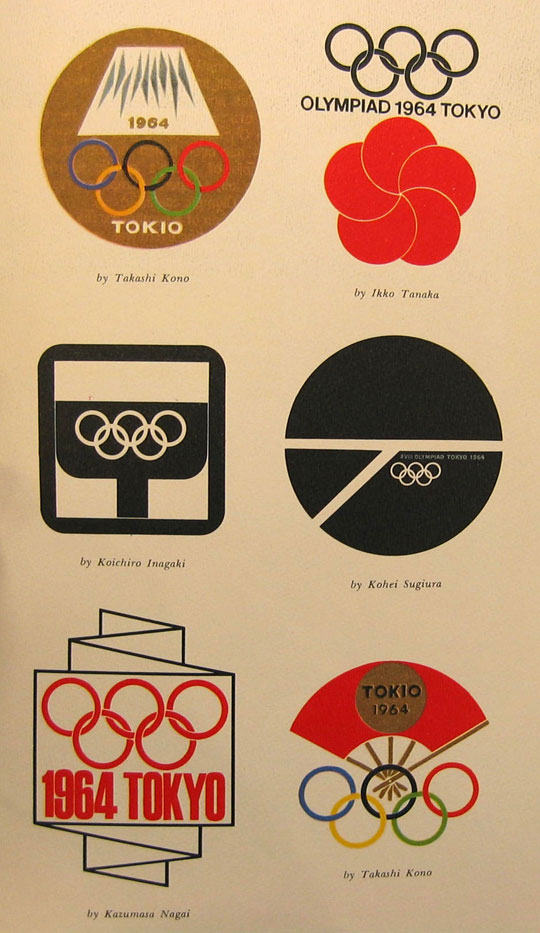 Jilly Traganou has recently published an article entitled “Tokyo’s 1964 Olympic design as a ‘realm of [design] memory’” in the Routledge publication, Sport in Society. Research material, like the image above, was collected during a summer grant from the Japan Foundation in 2007 that allowed for a two month research trip in Japan.
Jilly Traganou has recently published an article entitled “Tokyo’s 1964 Olympic design as a ‘realm of [design] memory’” in the Routledge publication, Sport in Society. Research material, like the image above, was collected during a summer grant from the Japan Foundation in 2007 that allowed for a two month research trip in Japan.
In the paper, Traganou examines the graphic design of the Tokyo 1964 Games as a symbolic site through which Japan’s postwar identity was re-articulated in relation with both the realm of internationalization and tradition. She posits that the visual language utilized by the Tokyo Games adhered to the anti-historical approach of modernism, while it also encoded the visual composition of crest design, established in medieval Japan. In encoding their tradition in not directly decipherable means, postwar Japanese designers found an important resource for distinguishing their identity in the international arena, and for establishing a continuity with their past.
The article also searches for analogies and divergences between the designs for the 1964 Tokyo Olympic Games and those for the 1940 Tokyo Games that were cancelled due to Japan’s involvement in the Pacific War. The 1940 Games have left almost no traces in accounts of Japanese and international design history and are only mentioned in the few historical accounts of the 1940 Olympics. Traganou points out that even though the political contexts of the 1940 and 1964 Olympics were significantly different, many of their Olympic design concepts were paradoxically quite similar. Important designers of postwar Japan and protagonists of the 1964 Olympic design, such as Hara Hiromu and Kamekura Yusaku, were also prominent designers in the campaigns of Imperialist Japan.
In the years following the Olympics, the work of Japanese designers were recognized as instigators of an international design scene, becoming also reminiscent of the 1964 Olympic glory days. On the other hand, they also encapsulated memories of the nation that acted on a visceral level, echoing Japanese society’s fluctuation between tradition and modernity, nationalism and internationalism, past and future.
To read the article in its entirety, please follow this link.


























